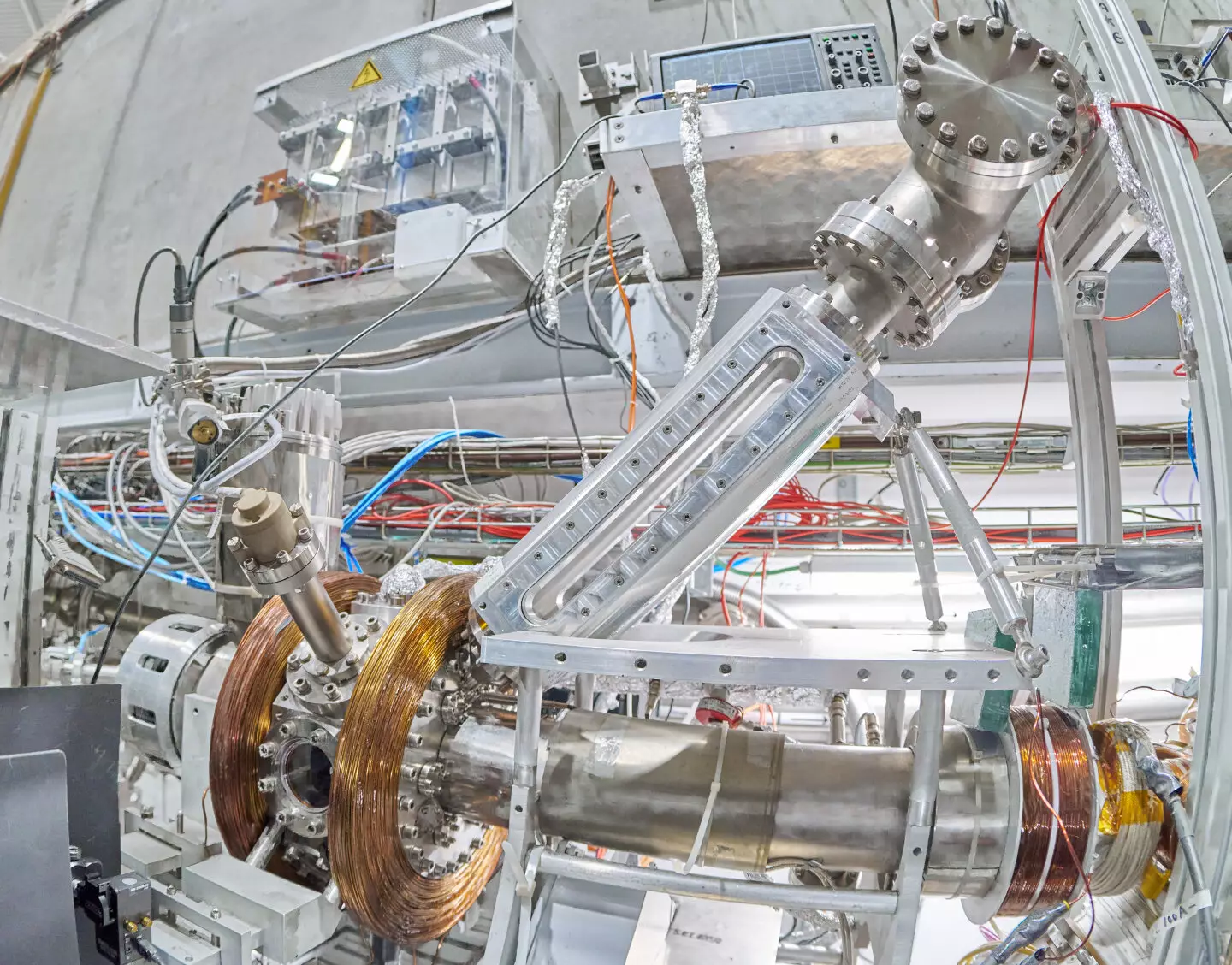Antimatter research at CERN’s Antimatter Factory has been making significant strides in studying antihydrogen atoms. One of the key experiments, AEgIS, is focused on testing whether antimatter and matter fall to Earth in the same way with high precision. In a recent publication in Physical Review Letters, the AEgIS collaboration announced a breakthrough that not only brings them closer to their goal but also opens up new avenues for antimatter research. This includes the possibility of producing a gamma-ray laser that could revolutionize the way researchers look inside the atomic nucleus.
To produce antihydrogen, AEgIS utilizes positronium, which consists of an electron orbiting a positron. By directing a beam of positronium into a cloud of antiprotons, the team is able to create antihydrogen, which is composed of a positron orbiting an antiproton. This method allows AEgIS to not only study antihydrogen but also delve into the properties of positronium, another antimatter system of interest worldwide. Positronium has a very short lifetime, annihilating into gamma rays in a fraction of a second, making it an ideal system for high-precision experiments.
One of the remarkable achievements of the AEgIS team is the successful cooling of a sample of positronium using laser cooling techniques. By lowering the temperature from 380 to 170 degrees Kelvin, the team has demonstrated the feasibility of precise measurements on positronium. The next step for the team is to push the temperature even lower, aiming to break the barrier of 10 degrees Kelvin. This breakthrough paves the way for a new era of antimatter research, allowing for detailed studies of the properties and gravitational behavior of positronium.
The laser cooling of positronium by AEgIS opens up exciting prospects for antimatter research. It enables the production of a positronium Bose-Einstein condensate, where all constituents occupy the same quantum state. Such a condensate could potentially lead to the generation of coherent gamma-ray light through the matter-antimatter annihilation process. This laser-like light consists of monochromatic waves with a constant phase difference, providing researchers with a tool to peer into the atomic nucleus and explore new frontiers in physics.
Laser cooling, a technique first applied to antimatter atoms a few years ago, involves slowing down atoms using laser photons through repeated cycles of photon absorption and emission. While conventional narrowband lasers are typically used for this purpose, the AEgIS team employs a broadband laser in their study. This innovative approach allows for the cooling of a larger fraction of the positronium sample, enhancing the precision and efficiency of the experiments.
The advancements in antimatter research at CERN, particularly by the AEgIS collaboration, represent a significant leap forward in our understanding of antimatter and its applications. The successful laser cooling of positronium and the potential for generating coherent gamma-ray light mark important milestones in the field of antimatter physics. With further research and experimentation, the possibilities for utilizing antimatter in fundamental and applied research are vast, paving the way for future discoveries and innovations.



Leave a Reply